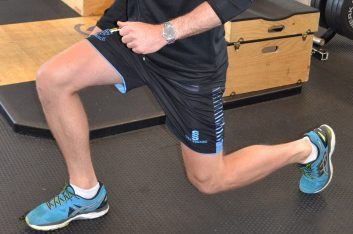
Physio ScienceUK: Latest Concussion Guidelines
Hot on the heels of the 5th International Conference on Concussion, PhysioScienceUK will take a look into the latest recommendations.
Concussions is an area of sports medicine that we know a lot more about, than 10 years ago. There is still a feeling that we will know a whole lot more in another 10 years time. We will simplify what’s known, what has changed and what science still needs more time to work out.
What we know
- Concussions can result from an impact to any part of the body, meaning that a direct head blow is not necessarily required.
- A Sports Related Concussion (SRC) will lead to the rapid development of transient symptoms. Some athletes will go on to experience ongoing and persistent symptoms.
- A SRC represents a functional disturbance to the brain and no current, standard investigations show any pathological changes.
- A SCR does not need to involve a loss of consciousness and it may involve any of the following symptoms.
- Somatic -head pain,
- Cognitive – feeling slowed down/not right,
- Physical – amnesia or neurological deficits,
- Balance Impairment – walking or standing control,
- Behavioural Changes – irritable, mood swings,
- Cognitive impairments – reaction times,
- Wake/Sleep disturbance – drowsiness or alertness.
- The accuracy of a concussion assessment declines as the day’s pass, following a head impact. It is believed that the assessment is most reliable in the first 3 days.
- Athletes who are believed to have sustained a SRC require strict monitoring for the first few hours and should not be left unsupervised for the first 48 hours.
- Most of adult concussions appear to resolve with in 10 days but children and adolescents can take up to a month.
Concussion recognition tool 5 (CRT 5) and SCAT5
What is staying the same?
- There is still a concussion recognition tool 5 (CRT 5) for clinicians to use pitch side. This is to identify an athlete who may have sustained a concussion.
- If in doubt, sit them out. This rule will never change!
- Failed pitch side CRT 5 assessment should then be followed by a full SCAT 5 assessment and further Neuropsychological assessment.
- Monitoring and passing a graduated return to play protocol is still suggested before re-introducing an athlete to competition.
What’s New
- Orientation questions (Time, Date, Month, Year, Day), used historically, are now recognized to be less reliable than memory assessments.
- School aged kids – there is a suggested graduated return to the school program.
- There is a slightly more flexible and individualized approach suggested, in deciding when to return an athlete to training. This may create more flexibility in an athlete’s concussion management pathways, based upon expert clinical opinion.
- Performing a symptom free level of activity is suggested to be appropriate, once an athlete has been asymptomatic at rest for 48 hours. The advice is in contrast to many sporting body’s current return to play guidelines, which advocate a sustained period of rest.
Where there is still grey
- Lack of a definitive, gold-standard, diagnostic criteria still makes concussion difficult to understand from a coach’s, parent’s or athlete’s perspective.
- Whether a SRC sits on the spectrum of traumatic brain injuries (TBI) or whether it is completely a reversible insult to the brain.
- There is still more to learn about how many concussions, is too many, and whether specific individuals are more susceptible to the long-term consequences of repeated concussion.
- It is still unclear whether sub concussive hits are having a detrimental effect on our brains, as well.
- Sports governing bodies reflect this more individual approach to returning athletes to training, following a concussion? Or will they stick with their currently strict, arbitrary guidelines
- Prevention – There is still minimal evidence for ways to reduce the risk of concussion.
- Mouth guards possibly show a protective effect in collision sports.
- Helmets have only been found to be effective in the Skiing/Snow Boarding populations.
- Limiting contact time in youth football training has been shown to reduce concussion incidence.
- There are limited studies that have proven the effect of training strategies on modifying intrinsic risk factors.
Concussion Conclusion!
The realm of concussion is forever expanding, we continue to learn more about what is happening to our brains and the number one priority will always be to ensure the immediate and long term safety of our athletes, above and beyond the demands that competitive sport will ask of them.
We hope this brief summary has bought your understanding of concussion, up to date.
For more information and/or advice, or to make an appointment with one of our physiotherapists, please click here www.physioscienceuk.com





